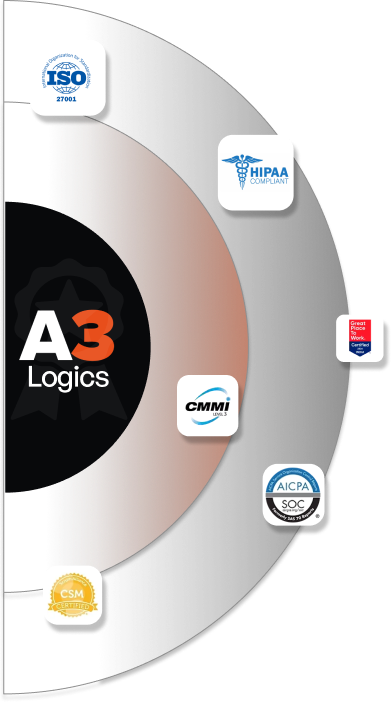Data Analytics in Healthcare: From patient records to clinical research and administrative data, the healthcare sector generates vast amounts of data every day. Electronic health records (EHRs), medical imaging devices, wearable technology like watches and smartphones, and other digital tools are some of the sources of this data.
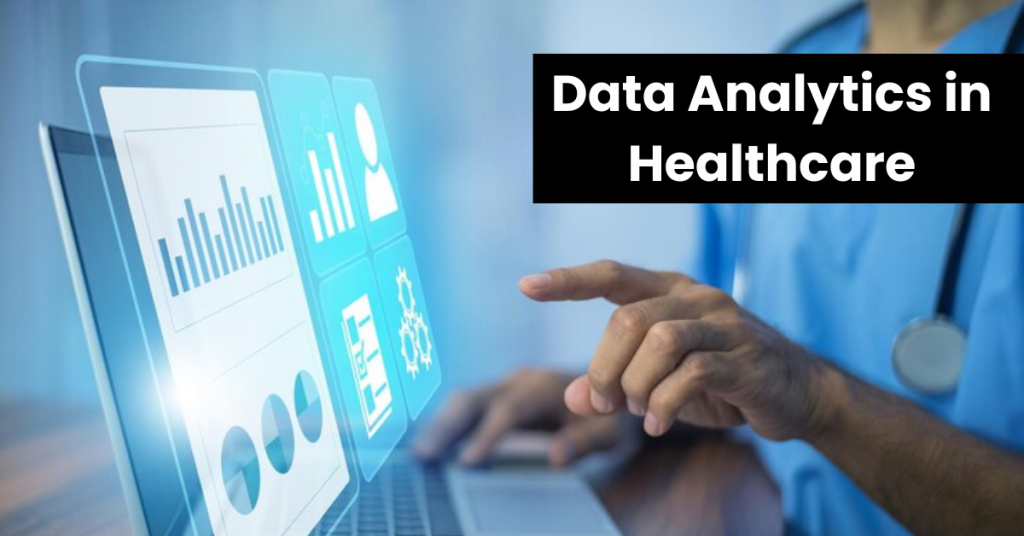
This medical data must undergo additional analysis to be valuable after its original use. The size of the global big data analytics in healthcare market was estimated at $29.7 billion in 2022 and is expected to increase at a compound annual growth rate (CAGR) of 16.7% from 2023 to 2032, reaching $134.9 billion. The healthcare sector is currently in dire – need of data analytics.
In order to – improve patient care, increase the efficacy of treatments, find areas for cost savings, and spur innovation. It aids researchers and clinicians to use data analytics to uncover hidden patterns and trends in clinical data. Despite the vast potential of data analytics in the healthcare sector – a number of obstacles might make it challenging to gather and analyze healthcare data.
In this blog, we have taken a look at the opportunities and difficulties of data analytics in healthcare. Let’s take a deeper dive into the strategies being created to overcome them.
Table of Contents
What is Data Analytics in Healthcare?
What is data analytics in healthcare? Well it is the methodical examination of health data to – enhance patient care, streamline operational procedures, and guide strategic choices is known as healthcare data analytics. Healthcare companies may find trends, gain insights, and make evidence-based decisions that improve outcomes for both patients and providers by examining enormous volumes of financial, administrative, and clinical data.
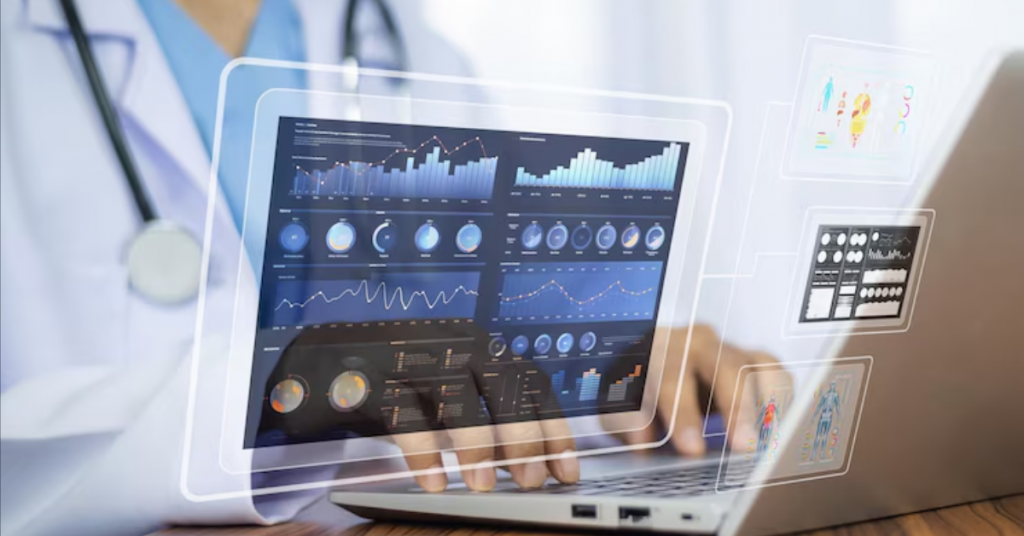
Big data analytics in healthcare is predicted to save $300 billion a year in the US, or 8% of total healthcare spending, according to McKinsey. Beyond merely gathering data, data analytics in healthcare entails analyzing intricate datasets to uncover patterns that may result in more effective, efficient, and individualized treatment.
Healthcare data analytics facilitates improved resource allocation and raises the standard of care overall, from lowering readmissions to hospitals to strengthening preventive care initiatives.
Key Benefits of Data Analytics in Healthcare
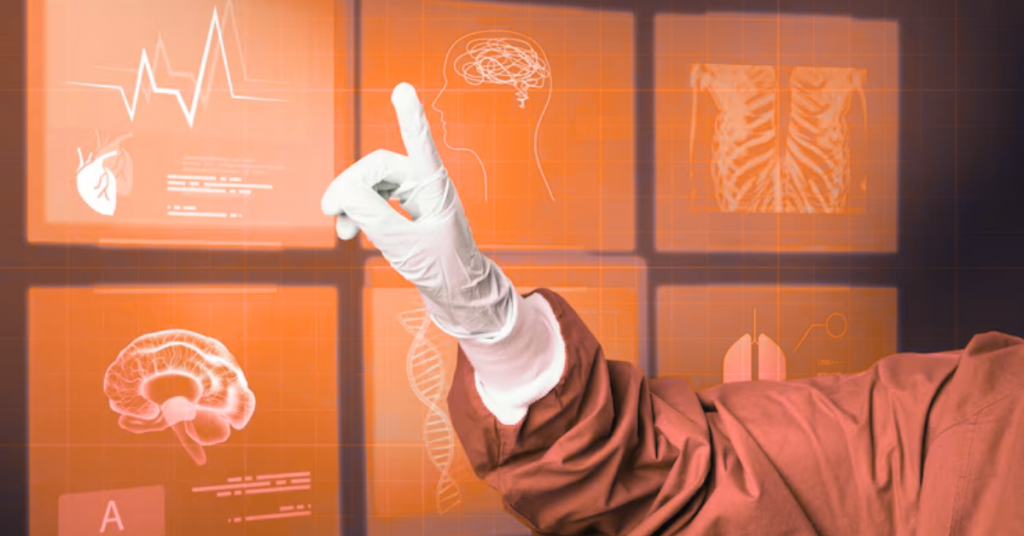
Healthcare organizations, providers, and patients can all benefit greatly from data analytics. Data-driven healthcare systems may increase operational effectiveness, improve patient outcomes, and provide more individualized clinical care experiences by using data to guide decision-making. The following are a few of the most important advantages:
1. Predictive Maintenance for Medical Equipment
Real-time monitoring of medical equipment performance through data analytics can detect impending failures before they occur. Predictive models, analyzing how equipment is used, wear patterns, and maintenance history, can predict when an item of equipment needs to be maintained, preventing lost time and enhancing quality of patient care.
2. Improved Resource Allocation
Health care facilities tend to be stretched thin with few resources. Data analytics in healthcare assists in resource optimization of resources such as employees, hospital beds, and medical equipment. Through patterns of patient flow, admission times, and treatment requirements analysis, health care managers can more effectively deploy resources, enhance efficiency, and make resources available when they are needed.
3. Fraud Detection and Prevention
Healthcare fraud, such as overbilling or unnecessary medical procedures, can be costly. The importance of data analytics in healthcare is that it can detect suspicious patterns, including anomalies in billing, patient records, and treatment plans. By flagging irregularities, healthcare organizations can prevent fraud, ensuring that funds are used effectively and reducing financial losses.
4. Social Determinants of Health Analysis
Identifying the social determinants of health (e.g., income, education, and environment) that influence patient health is essential in enhancing overall public health. Analyzing social determinants of health through data analytics in healthcare allows practitioners to develop evidence-based targeted interventions and individualized treatment plans based on these factors, ultimately improving health outcomes.
5. Augmented Clinical Trials
Healthcare analytics tools have the ability to greatly improve the planning and conduct of clinical trials by selecting proper candidates, refining trial protocols, and optimizing outcome analysis. Data from patients, such as medical histories, genetic profiles, and lifestyle variables, can be analyzed by researchers to identify more diverse and appropriate participants, resulting in more precise and quicker outcomes.
6. Patient Journey Mapping
Patient journey mapping entails the examination of the activities undertaken by a patient along their healthcare journey, from consultation to treatment and recovery. Data analytics helps healthcare professionals to determine pain points, inefficiencies, and areas of improvement in the patient’s experience and consequently improve care quality and patient satisfaction.
7. Integration of Genomic Data
With the emergence of personalized medicine, the use of genomic information in combination with electronic health records (EHRs) makes it possible to have more accurate treatments. Data analytics in healthcare is critical in processing genetic data, finding genetic susceptibility to diseases, and determining how patients will react to specific treatments. This facilitates the delivery of personalized care based on the genetic profile of the individual.
8. Clinical Workflow Optimization
Healthcare data analytics to enhance clinical workflows enhances care delivery efficiencies. Through processing data on the scheduling of appointments, treatment intervals, patient consultation, and doctor workload, the operations of the healthcare facilities are streamlined, reduced wait times ensured, and aggregate patient outcomes bettered, in a way that allows healthcare providers to spend more time on direct patient care activities and less time on administrative routines.
9. Healthcare Business Intelligence (BI) integration
Business Intelligence (BI) software assists healthcare organizations in transforming raw data into meaningful insights. By incorporating BI analysis, healthcare administrators are able to view the performance of the organization as a whole. BI enables real-time dashboards, monitoring key performance indicators (KPIs) like patient satisfaction, operation efficiency, and financial stability, with decision-making based on this information.
10. Analysis of Telemedicine Effectiveness
Telemedicine has increased over the last few years, but its success must be watched. Healthcare providers can monitor telemedicine metrics with the help of data analytics, including patient satisfaction, rates of successful consultations, and follow-up compliance. Through the evaluation of these metrics, healthcare organizations can enhance virtual care models so that telemedicine becomes a sustainable substitute for in-person visits.
11. Streamlined Inventory Management
Clinics and hospitals have to handle a huge quantity of supplies ranging from surgical tools to medicines. Data analytics in healthcare assists in making the inventory management process better by reviewing usage trends, inventories, and patient treatment needs. This allows healthcare professionals to make sure that the necessary supplies are in place at all times while minimizing overstocking and wastage, which translates into cost savings and enhanced delivery of care.
Types of Healthcare Data Analytics Businesses Should Know
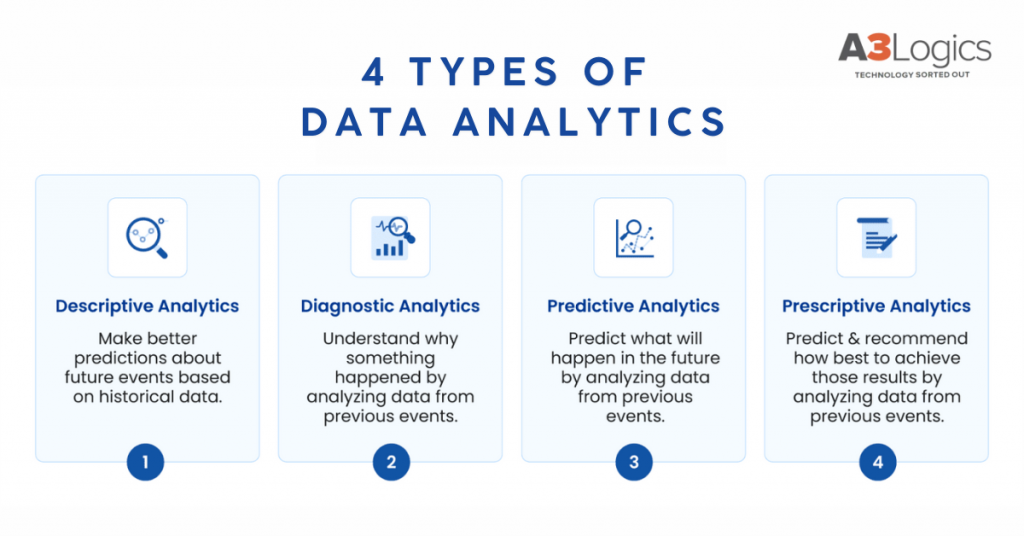
All analytics software generally uses one of four forms of data analysis, and healthcare data analytics uses all 4 types of data analytics for various purposes. Here’s how.
1. Descriptive analytics
The simplest type of analytics is descriptive analytics. In order to uncover trends and patterns, it analyzes historical data and comprehends past events using statistics and data mining. Descriptive analytics analyzes patient and historical data to help healthcare professionals identify current and ongoing health issues and optimize resource allocation by examining staff, equipment, and supply usage.
2. Diagnostic analytics
Diagnostic analytics uses in-depth data analysis to provide a response to the question, “Why did something happen?” Diagnostic analytics, for instance, can be used to identify the variables that contribute to an increase in wait times, such as operational problems, care provider issues, or patient-related factors, if descriptive analytics reveals longer wait times for patients in emergency departments. This can help increase efficiency and lessen ER crowding.
3. Predictive analytics
By analyzing both historical and present facts, predictive analytics goes beyond descriptive analytics to provide a response to the question, “What’s likely to happen in the future?” Artificial intelligence (AI) and machine learning (ML) are key components of predictive analytics in healthcare.
Forecasting possible infectious disease outbreaks, identifying patients at high risk of postoperative complications, or estimating a patient’s likelihood of contracting a certain disease are a few examples in the medical field. Healthcare organizations can also utilize predictive analytics in healthcare to manage their resources.
4. Prescriptive analytics
As the name implies, prescriptive analytics uses trends and patterns found in diagnostic, descriptive, and predictive analytics to recommend the best course of action to achieve certain goals. It also makes use of advanced machine learning methods.
Based on patient data and anticipated results, prescriptive analytics can be used to recommend the best course of action for preventative care initiatives, treatment programs, or resource allocation strategies. Although it is still in its infancy, this kind of analytics has enormous potential for tailored medication and better healthcare delivery.
Another kind of analytics is called discovery analytics, which only uses data analytics to find new medications, diagnose illnesses, and create alternate treatment plans.

How Data Analytics Reduces Healthcare Costs
1. Streamlined Electronic Health Records (EHR)
Data analytics in healthcare is essential to streamline Electronic Health Records (EHR) systems, making them more cost-efficient and effective. Through the analysis of EHR data, healthcare organizations can eliminate administrative overhead, enhance the accuracy of patient records, and eliminate redundancy. This results in fewer errors, enhanced clinical decision-making, and decreased operational costs, ultimately decreasing repeat tests and procedures.
2. Operating Room Demand Forecasting
Forecasting operating room (OR) demand using data analytics optimizes scheduling and resource utilization in hospitals. Using historical surgery data for the types of procedures, surgeon availability, and patient flow, hospitals are able to minimize OR idle time and avoid bottlenecks. This minimizes overtime expenditures and optimizes the utilization of available resources, allowing operating rooms to be fully utilized without spending unnecessary funds.
3. Optimized Staffing Models
Healthcare facilities tend to struggle with staffing, especially at busy times or if there is variability in the volume of patients. Predicting patient flow and streamlining staffing patterns can be done through data analytics, which ensures the optimal number of people at the optimum time. This discourages overstaffing (which is expensive in terms of labor) and understaffing (which leads to burnout and poor quality of care), thus lowering the cost of staffing.
4. Supply Chain & Cost Management Improvements
Healthcare providers can improve their supply chain management by tracking inventory levels, demand patterns, and performance of suppliers through data analytics. Hospitals can reduce waste, avoid stockouts, and negotiate improved prices with suppliers by examining historical usage patterns and projecting future requirements. This saves them substantial costs while providing the appropriate supplies at the time they are needed, enhancing financial and operational efficiency.
5. Fraud Prevention & Security Improvements
Medical fraud, such as overpayment and unnecessary surgeries, can introduce hefty expenses to the delivery of healthcare. Analytics technology assists in discovering fraudulent operations through the discovery of unusual patterns in billing, inconsistency in patients’ records, and unauthorized care.
By warning healthcare providers against such anomalies, these losses through fraud can be averted. More importantly, comprehensive security modules within analytics applications secure sensitive information related to patients, lowering expenses tied to breaches and identity theft.
6. Elimination of Medical Errors
Medical mistakes have the potential to cause expensive complications, prolonged hospital stays, and even litigation. Medical errors are minimized by using data analytics, which enables healthcare professionals to access real-time critical patient data, decision support tools, and predictive analytics. By examining patient condition patterns and treatment outcomes, hospitals can see where mistakes tend to happen more often and prevent them. Data-driven healthcare leads to better patient safety, decreased readmissions, and reduced operational and legal costs.
Real-World Applications of Data Analytics in Healthcare
Here are five important applications that are having a big influence on the healthcare sector to help you understand how data analytics is changing it.
> Clinical Decision Support
Clinical Decision Support systems employ data analytics to support healthcare professionals in making timely, accurate, and informed decisions. These systems evaluate huge amounts of information from electronic health records (EHRs), laboratory tests, medications, and other clinical sources to supply actionable advice at the point of care.
CDS tools may warn clinicians of possible drug interactions, identify abnormal laboratory results, make recommendations for diagnoses, or provide evidence-based treatment suggestions. The aim is to decrease medical errors, standardize treatment, and enhance patient outcomes.
At Mayo Clinic, CDS applications built into their EHR reduce the time physicians spend reviewing large volumes of medical history and real-time vital signs. The system identifies potential threats early by using history and real-time vitals, making diagnosis faster and outcomes better. It has noticeably lowered unnecessary admissions and enhanced emergency department productivity.
> Personalized Medicine
Personalized medicine, or precision medicine, applies data analytics to tailor care to an individual’s genetics, lifestyle, and environment. Rather than employing a “one-size-fits-all” approach, treatments are designed to anticipate how each individual will react to a given therapy.
With genetic data, hereditary history, and other factors specific to each patient, doctors can choose treatments that are most effective with fewest side effects. Analytics makes it feasible to mine this at scale and leverage predictive models in decision-making.
St. Jude Children’s Research Hospital has led the way in applying personalized medicine to pediatric cancer patients. The hospital uses the PG4KDS (Pharmacogenomics for Kids) program to examine each patient’s genetic makeup to determine how they may respond to chemotherapy medication. This has enabled doctors to fine-tune dosages or select different drugs, enhancing the success rate of treatments and eliminating harmful side effects.
> Population Health Management
Healthcare facilities that focus on prevention and treatment can show hotspots for population growth or concentrations of particular diseases by using data analytics with data sources such as Google Maps and free public health data. To handle these shifting circumstances, they can then deliberately modify their service offerings, resources, and skill sets.
Healthcare big data analytics was employed by numerous governments and health institutions during the COVID-19 pandemic for a variety of purposes, from forecasting outbreaks to identifying and diagnosing infected individuals to determining the best course of action to stop the spread and organizing follow-up activities.
> Remote Patient Monitoring
Data analytics have a significant edge when it comes to tracking a patient’s vital signs and raising the alert when danger is imminent. They never turn off. Day or night, they will not let a patient’s condition change. Even better, data analytics can identify downward trends early when human caregivers are too busy or less capable of anticipating and averting emergencies.
For instance, there can be abrupt and substantial changes in the health of pediatric patients in the cardiac intensive care unit at Boston Children’s Hospital in the United States. By combining data from many bedside monitors into a single, easily readable “stability index,” data analytics—more especially, bedside predictive data analytics—help keep young patients alive by displaying each patient’s overall health.
Hospitals also employ data analytics when patients are admitted. It assists personnel in determining risk and choosing the course of therapy that best suits the patient’s profile and condition. Data analytics and data visualization through healthcare dashboards, when combined with extra input from national guidelines, can offer trustworthy, understandable risk-level indicators for operations or other caregiving actions.
> Hospital Readmission Reduction
A patient should ideally never have to return to the hospital after they leave. Readmissions are possible, nevertheless. Keeping them to a minimum then benefits all parties involved, including the patient, caregivers, and the health insurance company.
By analyzing data to identify which patients had a more challenging recovery following their hospitalization and developing a strategy to support them after discharge, Corewell Health is utilizing predictive analytics in healthcare to lower hospital readmissions.
Similarly hospitals may identify patients who may require readmission by using comprehensive data from medical records and data analytics. When this element is discovered early in the patient’s initial hospital stay, the staff can plan the patient’s care to minimize the need for a follow-up visit. Healthcare organizations can evaluate their performance over time with the use of data analytics.
As a result, value-based reimbursements are more equitable and precise, which motivates the institutions to further lower readmission rates.

Challenges in Implementing Data Analytics in Healthcare
As healthcare organizations rely more on data analytics in order to enhance patient outcomes and reduce inefficiencies, the journey to implementation is not without some barriers. From headaches of integration to tough privacy laws, a few challenges need to be overcome if analytics is to bring its potential to bear.
1. Data Integration Problems
Healthcare systems usually function with a combination of legacy systems, EHR systems, laboratory databases, and imaging software—all with their own data format and storage system. Combining all these heterogeneous sources into one system for analysis can be highly intricate.
Example: A hospital may have varying vendors for its EHR, lab information systems, and billing software. With no interoperability, valuable insights are locked up in silos, and clinicians can be deprived of an integrated view of patient care.
2. Data Quality and Standardization
Even if the information is available, disorganized formats, lost values, and inputting errors can generate untrustworthy insights. Ensuring data standards across various departments and providers are essential to achieving trust in analytics tools’ outputs.
Example: One system could capture blood pressure as “120/80,” whereas another captures it as two distinct fields. Such inconsistencies will make analysis tricky and result in incorrect clinical or operational decisions.
3. Sophisticated Healthcare Data Structures
Healthcare data is complex by nature. It consists of structured data (such as laboratory test results), unstructured data (such as doctor notes), and semi-structured data (such as HL7 messages). Processing and gaining insights from such diverse formats needs sophisticated tools and trained staff.
Example: Natural Language Processing (NLP) would frequently be required to glean usable information from clinician notes, but the technical and training burden for deploying NLP models are substantial.
4. Organizational Silos and Resistance to Change
Data analytics implementation is more than a technological change—it is a cultural shift. Healthcare facilities frequently encounter an internal resistance offered by departments comfortable working in autonomy or fearing the analytics will lay bare inefficiencies.
Example: Radiology, pharmacy, and primary care departments may have standalone databases and reporting systems. Facilitating collaboration and information exchange can be a significant challenge, particularly in large organizations with complicated hierarchies.
5. Compliance & Privacy Regulations (HIPAA, GDPR, etc.)
Patient data privacy is of utmost importance in healthcare. Laws such as HIPAA (in the United States) and GDPR (in the European Union) impose strict guidelines on the storage, access, and analysis of patient data. Balancing these legal guidelines with facilitating effective analytics is a delicate process.
Example: An analytics platform needs to provide encryption of data at rest and in transit, audit trails, and limit access to sanctioned users alone—adding complexity to any analytics deployment.
Future of Healthcare Data Analytics
With the merging of technology and healthcare, the function of data analytics is developing at an unheard-of speed. From augmenting diagnostics to allowing personalized treatment, the future of healthcare data analytics is about becoming smarter, more actionable, and more accessible data. Following are the trends transforming the future generation of healthcare analytics:
1. AI & Machine Learning in Diagnostics
Artificial Intelligence and Machine Learning are poised to revolutionize the diagnostic process by finding patterns within enormous datasets at unparalleled speed and accuracy. They facilitate early detection of disease, perform repetitive tasks automatically, and eliminate the scope for human errors. Healthcare providers in the coming days will depend increasingly on AI-driven tools for the interpretation of laboratory results, imaging data, and patient information.
2. Adoption of Real-Time Analytics
Real-time analytics is increasing in popularity as health systems seek to enhance real-time decision-making within clinical environments. Ongoing monitoring of data allows care teams to respond more quickly to evolving patient conditions, streamline treatment pathways, and avoid complications. As the use of connected devices and sensors continues to grow, real-time insights will be an integral part of patient care workflows.
3. Increased Interoperability and Data Sharing
Interoperability will play a crucial role in dissolving data silos among healthcare providers, payers, and patients. Unimpeded sharing of data provides an improved, integrated perspective of patient health, translating to better care and lower redundancies. Upcoming systems will emphasize standardized exchange of data to enable cross-platform compatibility and facilitate collaborative care.
4. Patient-Centered Data Platforms
Enabling patients with direct access to their health data will be of prime importance. Personalized dashboards, health apps, and secure data portals will allow patients to monitor their health metrics, see test results, and control appointments. Such platforms not only encourage engagement but also facilitate preventive care and management of chronic disease.
5. Predictive Population Health Trends
Data analysis in healthcare will increasingly be employed to predict population health trends, detect high-risk groups, and inform public health policy. Predictive models will assist in resource planning, prevention efforts against disease, and policy-making. This forward-looking strategy will enable healthcare systems to move away from reactive care towards long-term, data-driven prevention.
Empower Your Healthcare Strategy with A3Logics
A3Logics offers leading data analytics services that enable healthcare organizations to harness leading-edge data analytics for enhanced patient outcomes, cost savings, and operational efficiency. With extensive industry experience and adherence to standards such as HIPAA and GDPR, A3Logics provides end-to-end analytics solutions across healthcare providers, payers, and public health organizations.
From data integration with ease and real-time dashboards to predictive analytics and AI-driven insights, we offer scalable, interoperable platforms that boost care delivery and workflow optimization.

Conclusion
Healthcare practitioners’ capacity to provide more individualized and efficient patient care, as well as to recognize and handle new health trends and issues, might be greatly enhanced by the application of data analytics. The use of data analytics in healthcare has grown as a result of the increasing availability of various data and the creation of fresh strategies to address the implementation issues that healthcare organizations confront.
The quality of medical operations and treatment regimens, as well as patient outcomes, have improved significantly as a result.




